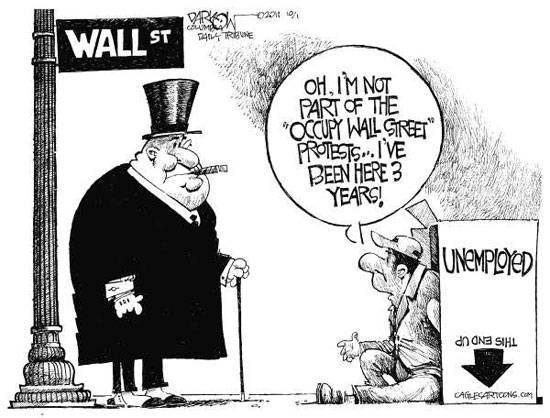Future of crypto securities is in the hands of Steemit. Readers.
TLDR: Through separate coins structures, Steemit provides a novel security model, for example vote on content to be promoted on site, and get part of revenues for curating it. Steemit is a hybrid synthetic model where one can follow Steemit success by owning the tradable tokens, and being compensated with other tokens. Valuation of Steemit tokens (“STEEM”) however, is difficult because there are three different subsets of tokens that underpin the value of STEEM. Further valuation difficulties also arise from the lack of transparency from Steemit Inc as core contributor is not fully transparent. A pure DAO form would have made better sense, by improving the fairness of the distribution mechanism, which currently tends heavily toward benefiting the large token holders.

Traditionally, equity securities involve the right to vote, and have a share or profit (See my previous article for an overview of securities basics). Those two rights are way of “owning” a company, legally, and practically. Voting would navigate the company and it would distribute the profits back to holders of this right. Those rights would be granted to investors of fund but also of effort (like stock options) or the entrepreneur who introduced the idea.
Blockchains tokens are shaking the bedrock of entrenched securities principals that have insulated those few best capitalized businesses. With smart contracts those rights could be altered easily and be flexible. Moreover Decentralized Autonomous Organizations are new structure both for the investor who passively looks to invest in a decentralized community (“you are supporting a protocol not a company” said Coinbase employee turned investor, Olan Carlson Wee)), or to the participant who is now actually becoming owner, for his voting and profit rights.
TheDAO was a great project with the concept of a decentralized venture capital organization that purely exist on the blockchain and operates through smart contracts. Other projects (Digix, Maker) offer an hybrid approach where a company developes a smart contract system that distribute dividends (mostly in form of the native token) back to their users. Steemit offers similar approach with added complexity and obfuscation. Still, as pioneers in the space it’s an example that we can analyze and maybe learn more what the new world of crypto securities will look like.
“A blockchain based token can be viewed as ownership in the community“ (whereas a convertible note can be viewed as a debt denominated in any other commodity or currency).” - @dan Lermier from Steemit's White Paper
Dan is offering splitting profit rights from voting right for two different rights which can be dynamically altered, according to market conditions, or personal contribution to the network. For example, as a user you’re entitled to vote on the content you value and wish to promote, and also receive revenue you helped created (“miners” and “witnesses” that operates the network, would also receive compensation as further explained on the whitepaper). Steemit achieved this with a complex model that involves 3 different internal currencies. Even the great Fred Wilson doesn’t understand fully how they operate, but in general it’s STEEM, Steem Power and Steem Dollar (an high level overview on the model could be found in S+C article):
Steem tokens are the ones which are being traded. Steem Power are tokens that are locked in vesting scheme, one could release over the course of two years (and 104 payments!). Steem Power also grant its holder superior curation rights so it creates incentive to participate in the network for a long while. In the whitepaper it was explained as proving participants are in for the long run, calling the vesting scheme “debt” instrument. In a way it is, the network owes you more Steem Power as long as you’re part of the network, but maybe it’s a nicer way of saying we are locking in your investment. Moreover distribution is made proportionally to existing holders, so the incentive mechanism is prioritizing the “whales”, or those who can purchase a lot of Steem (and convert those to the locked Steem Power). It’s important, with Steem Power “whales” have more say how to distribute tokens to content creators, while those comes in a third (!) form of reward tokens — the stable Steem Dollar, which it’s value pegged to USD.
From the perspective of ownership and control it’s even more complex. Token holders can’t control steemit the operator of the website whatsoever, they might control the content, which is important nevertheless (or perhaps alternatively control the ecosystem with an open source contributions on github). With revenue sharing, the entitlement is for portion of revenue you added as content creator, or helped curated (by the distribution of Steem Dollar). Right in profit for work being done resembles a commission more than ownership. Steem Power is distributed to Steem Power holders to incentivize vested tokens holders to hold on, but this is inflation as opposed to network profits.

In the legacy economic world, ownership would represent the revenues of a company, Steemit Inc in our case, as investors are essentially partnering it. Steemit revenues are not being published, so it’s an hard sell for potential investor. Steemit founders themselves mined early big holdings, and we can assume that the company develops revenue channels (maybe they make fees when one buying the currency through their website?) but it’s not transparent. If synthetically following the success of Steemit Inc (2008’s synthetic CDOs, anyone) is hard, with separate currencies structure, it’s even harder valuing the opportunity. Steem “stock” however, seems to follow the network demand for Steem (the token which you buy Steem Power with in order curate content). While it’s not necessarily Steemit Inc profit, it could be viewed as buying an asset with potential inherentic value, if public buys in to get more of it. But again, the other internal currencies could cause for confusion for investors (and regulators). It’s hard to predict which and when users convert their holdings, which affects the total supply calculations.
Good comparison would be if Reddit was being publicly traded, you can control content, contribute through api and get share of profit of Reddit (although Reddit CEO wished they could be more like Steemit). Reddit is not a publicly traded company, and if they were, some parts of it were more transparent and easier to value (but trading through a public blockchain is generally a more transparent system to trade on!).

A DAO structure could be cleaner because at least there is an entity which the tokenhloder has clear rights, even if it exists solely on the internet (more about the legal structure of DAOs in next article). Moreover, token participation with voting since DAO inception would allow the community to determine their own desired incentive mechanism (having their own mechanism of inflation-rate-by-voting ). This is a true benefit that Reddit wouldn’t be able to offer us (systematically, when you buy a stock on public market, you technically don’t even own it, not even the broker). A true community owned forum would be then formed, an the black box (coined “subjective proof of work” in Steemit whitepaper) would be developed step by step together with the community to better represent their own values.
In Steemit’s case it seems that smaller users are being left behind in favour of coordination machine for whales**. Steemit try to think on long term incentives, but it’s the eternity incentives, such as user feelings for being treated fairly, that counts more heavily. While it would take more time to build such project as pure DAO as opposed to Steemit structure (and putting aside security issues), the result might be worth it.
Under steemit model the rights attached to those coins are complex, their utility is disconnected, and rates of redistribution to holders looped and make it harder to understand. It might be next generation security, dynamically changing, and voting disconnected from profit sharing (some jurisdictions do not allow public listing of dual class shares), but Steemit current form resembles the 2008 sub prime CDO and CDS instruments : too complicated for the regulator to understand, too dangerous for the investor.
It seems that Satoshi initial prophecy, a world without central banks, turned out in reality, to be a world where everyone could be a central bank, by using his blockchain technology. Also by replacing centralized markets for currencies and securities with blockchain, we get built in market mechanics, kind of DIY Nasdaq, that can easily be integrated to more projects and markets...
Starups should use this technology to create better fairer world. Crypto securities can and should be dynamic, implementing that way meritocracy as governance structure, for fairer redistribution of assets to users and contributors (e.g. the new crypto securities). It up to you, new digital currency startups, to build the future the right way:
How you make a fairer representation of values by the incentives structure? How much votes and control over your product are you willing to give away to your community? How much revenue would you share with them? What would suit best your community and society at large? For reference find the hybrid centralized approach approach of SingularDTV, that let users vote on DAO structure, but not on the execution of projects which is done by centralized entity.
Nevertheless, Steemit managed to execute his ideas quite well, as total market cap is valued around $250M (again, the market cap might not accurately representing the complex model of 3 separate tokens). Steemit brings a lot of innovation to the table (inflation instead micropayments — the min balance approach, even embedded stablecoin for future merchants adoption is a great idea), remuneration opportunities, and it’s indeed an overall ambitious project (nevertheless, an important experiment).
While hoping for some upvotes, I'm holding my breath to the next new projects around the corner...
Lior Zysman, lawyer (admitted outside of US) and consultant to crypto startups
** “someone who only receives their own vote will receive much less than someone who receives votes from 100 different users. This encourages users to cooperate to vote for the same things to maximize the payout (wrong assumption). This system also creates financial incentive to collude where everyone votes on one thing and then divides the reward equally among themselves.”
Interesting post. Well done :)